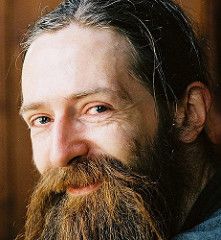I am a former Microsoft programmer who wrote a book (for a general audience) about the future of software called After the Software Wars. Eric Klien has invited me to post on this blog. Here is my section entitled “Software and the Singularity”. I hope you find this food for thought and I appreciate any feedback.
Futurists talk about the “Singularity”, the time when computational capacity will surpass the capacity of human intelligence. Ray Kurzweil predicts it will happen in 2045. Therefore, according to its proponents, the world will be amazing then.3 The flaw with such a date estimate, other than the fact that they are always prone to extreme error, is that continuous learning is not yet a part of the foundation. Any AI code lives in the fringes of the software stack and is either proprietary or written by small teams of programmers.
I believe the benefits inherent in the singularity will happen as soon as our software becomes “smart” and we don’t need to wait for any further Moore’s law progress for that to happen. Computers today can do billions of operations per second, like add 123,456,789 and 987,654,321. If you could do that calculation in your head in one second, it would take you 30 years to do the billion that your computer can do in that second.
Even if you don’t think computers have the necessary hardware horsepower today, understand that in many scenarios, the size of the input is the primary driving factor to the processing power required to do the analysis. In image recognition for example, the amount of work required to interpret an image is mostly a function of the size of the image. Each step in the image recognition pipeline, and the processes that take place in our brain, dramatically reduce the amount of data from the previous step. At the beginning of the analysis might be a one million pixel image, requiring 3 million bytes of memory. At the end of the analysis is the data that you are looking at your house, a concept that requires only 10s of bytes to represent. The first step, working on the raw image, requires the most processing power, so therefore it is the image resolution (and frame rate) that set the requirements, values that are trivial to change. No one has shown robust vision recognition software running at any speed, on any sized image!
Continue reading “Software and the Singularity” »
 It’s easy to think of people from the underdeveloped world as quite different from ourselves. After all, there’s little to convince us otherwise. National Geographic Specials, video clips on the Nightly News, photos in every major newspaper – all depicting a culture and lifestyle that’s hard for us to imagine let alone relate to. Yes – they seem very different; or perhaps not. Consider this story related to me by a friend.
It’s easy to think of people from the underdeveloped world as quite different from ourselves. After all, there’s little to convince us otherwise. National Geographic Specials, video clips on the Nightly News, photos in every major newspaper – all depicting a culture and lifestyle that’s hard for us to imagine let alone relate to. Yes – they seem very different; or perhaps not. Consider this story related to me by a friend.

 The summer 2010 “
The summer 2010 “ Also speaking at the H+ Summit @ Harvard is
Also speaking at the H+ Summit @ Harvard is 







